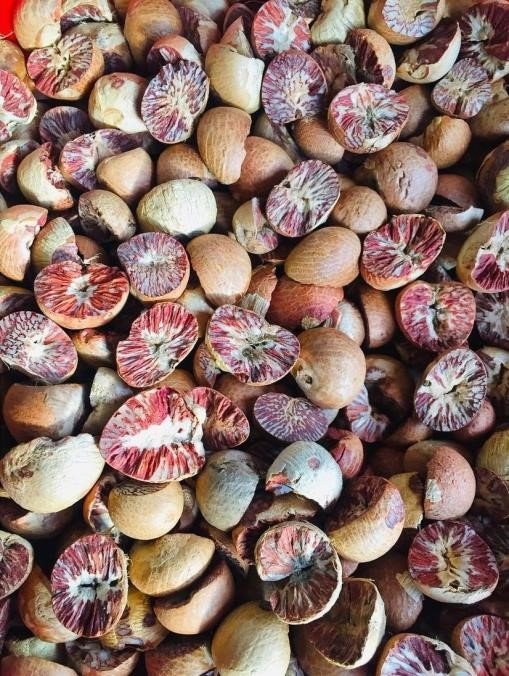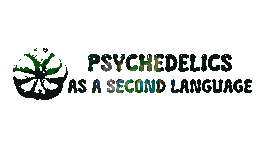ARECA THE FRUIT OF DISEASE
Unfortunately, as humans, we are presented with a vast number of diseases, the deadliest being tumors, and cancer, with deaths breaking nearly 10 million deaths only in 2020. Cancer forms from the transformation of cells into tumor cells in a progressive multi-stage that leads to a malignant tumor. This transformation can be either caused by genetics, physical carcinogens being the most acknowledged example of the survivors and current habitants of Chernobyl, biological carcinogens such as infections caused by viruses, bacteria, or parasites, and chemical carcinogens such as tobacco smoke, aflatoxin, and the traditional use of Areca Nut also known as Betel Nut.


The Betel nut it’s a small nut about the size of an acorn that comes out of a palm tree, Areca Catechu, the plant was firstly found in the Philippines and has made its way to various Asian and African communities and become the fourth most widely used substance after tobacco, alcohol, and caffeine being consumed approximately by 20% of the world’s population and recently expanding, having a boom in the Australian Black Market.
The nut is used by adults as a tradition in Asian and African countries, depending on the cultures the method of consumption differs, while some cultures prefer to consume Areca raw, others prefer to dry the nut and in some cases areca nut is available as an ice-cream. The nut is often wrapped in a leaf, called Betel leaf, a vine from the Piperaceae family for aromatizing purposes. The name Betel is both applicable for the nut and the leaf from the pepper, the user wraps it with the leaf and puts it in his mouth in between the gum and the lip absorbing it, similar to how nicotine gums are used, some users also add lime to it to add more flavor, the absorption of this blend tends to drain colors of the lips and gums turning them to a reddish-brown taint and staining of the teeth, which is traditionally seen as a sign of wisdom is Asian countries, it’s said that one who has used Betel for a long time gotten much wisdom over the years.
However, after years of daily usage, some pathologies begin to develop. Since the combination sits in the mouth and it’s left their pathologies such as erosion of the gums and cheeks, development of callus inside the cheek are the most common issue, dependence syndrome, submucous fibrosis a condition that despite having no cure, some believe that it may be reversed if seen early and the betel use is stopped, in some cases the restricted opening of the jaw is responded with physiotherapy to stretch the fibrous bands and in various cases cheek and tongue cancer followed by the correction of nutrient deficiencies such as iron and vitamin B.
This tradition has become a worrying situation in South Africa, as 68% of cheek cancers and 84% of tongue cancer has been traced back to individuals who consume Areca quids without tobacco and in countries such as India the number of cancer in the mouth has exceeded cancers associated with tobacco, the reason of why these events are happening can be explained with chemistry, the main alkaloid in Areca nut, arecoline is responsive to mercapto groups, SH(sulfhydryl) groups, while in tobacco the main alkaloid is nicotine when curing tobacco by adding nitriles giving it an aging texture and smell of the commercially available tobacco, the methyl group in Nicotine is been taken away and a nitroso group is added, therefore, we are left with nitroso nornicotine, a carcinogen agent responsible for the various tobacco-related cancers. In arecoline, something takes in the SH groups and therefore robs the biological defense against the nitroso nicotine. So when one mixes these two compounds there’s a euphoria from arecoline a GABA-uptake inhibitor and a sympathetic stimulant, and a stimulation and light head feeling from the tobacco, as well as an opening for a bigger absorption of the carcinogenic effect of nitroso nornicotine.
Mixing both of these plants compensates the body’s defenses against each of them, giving us a preventable cancer-social problem that is being promoted and advertised as an amazing experience, the lack of education towards drugs together with the bad relationship of individuals with specific compounds heavily contributes to this social paradigm.
In a controlled setting by health professionals and scientists, Arecoline has shown some potential as a clinical tool to aid as an anti-helminthic and astringent to an aphrodisiac, digestive enhancement, and psychomotor stimulant and some hypotheses as antipsychotic treatment of schizophrenia.
During the 1970’s the hypothesis of the antipsychotic value of Areca was firstly published since the substance acts as a nonselective muscarinic and nicotinic receptor agonist, similarly to antipsychotic medication. This study was followed by Sullivan, Andres, Otto, Miles, and Kydd in 2007, the study highlighted that the Areca chewers showed significantly lower scores in the general pathology subscale and PANSS (Positive and Negative Syndrome Scale). Although it is to note that the unmedicated patients consumed more Areca than the medicated group, while a longitudinal study performed in 65 indigenous patients the difference in psychotic symptoms between doses was also observed, the patients were given (>7.5 betel nuts/day) as a high dose and (<7.5 betel nuts/days) as a lower dose, the study was mediated during 4 to 8 months of follow up, despite the failure of finding out differences in psychotic symptoms when the PANSS data was observed for gender the male high consumers had significantly lower positive symptoms than low consumers and when comparing female patients to male patients the women showed a tendency towards lower PANSS positive symptoms as well as greater consumption of Areca. On the other hand when observing the Social Adaptation Self-Evaluation scale to assess social functioning, surprisingly the areca chewers were more frequent to hold a job.
The study was then concluded by Coppola & Mondola in 2012 with mixed results, as the clinical studies did not show a worsening of the psychotic symptoms in patients, however, in some subtypes of schizophrenics the consumption of the plant had particularly positive symptoms.
Despite its possible clinical values, the contraindication of this botanical psychedelic leads to various cancers daily whether from the lack of education or the lack of control of one’s relationship with the drug, giving us the useful information that drugs are inanimate objects and the only thing dangerous about them is our relationship upon them.
Therefore, a drug cannot be harmful on its own.
References:
Oral, Head and Neck Oncology and Reconstructive Surgery by Newell W.Johnson , Hemantha K.Amarasinghe, Jesse R.Qualliotine, Carole Fakhry.
Chapter 1 Epidemiology- https://doi.org/10.1016/B978-0-323-26568-3.00001-4
The effects of an indigenous muscarinic drug, Betel nut (Areca catechu), on the symptoms of schizophrenia: a longitudinal study in Palau, Micronesia by Roger J Sullivan, Sylvia Andres, Caleb Otto, Wayne Miles, Robert Kydd
DOI: 10.1176/ajp.2007.164.4.670
Manson’s Tropical Infectious Diseases (Twenty-Third Edition) Chapter 73- Tropical Oral Health by
Raman Bedi, Crispian Scully: https://doi.org/10.1016/B978-0-7020-5101-2.00074-1
Areca Alkaloids and Schizophrenia by Maurizio Coppola, Raffaella Mondola, Francesco Oliva, Rocco Luigi
Picci
Academic Press Volume 3 Chapter 79: https://doi.org/10.1016/B978-0-12-800634-4.00079-2
The Nature of Drugs: History, Pharmacology, and Social Impact Volume 1- Alexander Shulgin, Published by SynergeticPress 2021
